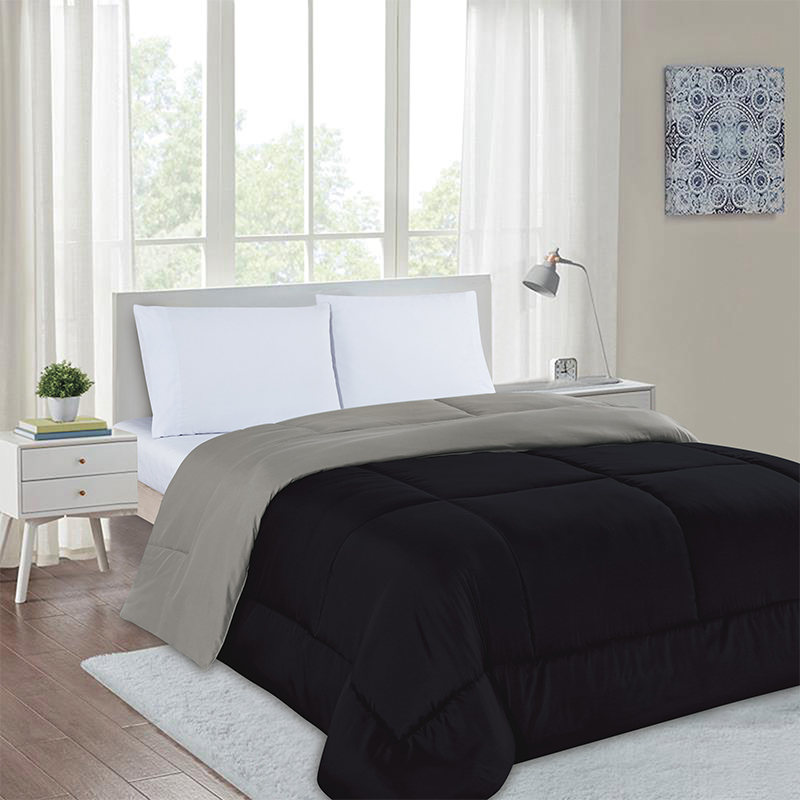Quilted Winter Comforter is more than just a cozy addition to your bed—it’s a marvel of material science. But what makes these comforters so effective at trapping heat while remaining comfortable? The answer lies in the intricate balance between thermal conductivity, breathability, and the choice of filling materials. Whether you’re snuggling under a plush down-filled quilt or opting for a lightweight microfiber option, understanding the thermal dynamics of your bedding can help you make smarter choices.
At the heart of every quilted winter comforter is its filling material, which plays a critical role in determining how well it insulates. For instance, natural fillings like goose down are renowned for their exceptional warmth-to-weight ratio. Down clusters trap air within their structure, creating tiny pockets of insulation that prevent heat from escaping. This makes them ideal for those who want maximum warmth without the bulk. On the other hand, synthetic options such as polyester or down alternatives mimic this effect while offering hypoallergenic benefits, making them perfect for allergy sufferers. When shopping for a quilted comforter , consider how the thermal conductivity of the filling aligns with your climate and personal preferences. A colder environment might call for higher loft and denser materials, while milder winters could be better suited to lighter fills.
But warmth isn’t the only factor to consider—breathability is equally important. No one wants to wake up drenched in sweat after a night under an overly stuffy quilted winter comforter. That’s where advanced materials come into play. Modern innovations in microfiber technology have led to fabrics that wick moisture away from the body, ensuring you stay dry and comfortable throughout the night. Similarly, wool-filled comforters are gaining popularity for their ability to regulate temperature naturally. Wool fibers absorb moisture vapor without feeling damp, making them a fantastic choice for those who tend to overheat. By choosing a winter comforter with the right blend of insulation and breathability, you can enjoy uninterrupted sleep even on the chilliest nights.
Another key aspect of thermal performance is the quilting pattern itself. Beyond its decorative appeal, the stitching design directly impacts how well the filling retains heat. Intricate patterns like diamond or wave quilting not only add visual interest but also help distribute the filling evenly across the comforter. This prevents clumping and ensures consistent warmth, eliminating cold spots that can disrupt your sleep. If you’ve ever wondered why some quilted winter comforters feel cozier than others, the answer often lies in the precision of their stitching. Brands that invest in high-quality quilting techniques create products that stand the test of time, maintaining their insulating properties wash after wash.

For eco-conscious consumers, the sustainability of materials used in quilted comforters is also a growing concern. Organic cotton and recycled polyester are becoming popular choices for outer fabrics, offering both environmental benefits and enhanced durability. Meanwhile, innovative biodegradable fillings like bamboo fibers or kapok are emerging as viable alternatives to traditional materials. These sustainable options don’t just reduce your carbon footprint—they also deliver impressive thermal performance. So, whether you prioritize warmth, breathability, or eco-friendliness, there’s a quilted winter comforter out there designed to meet your needs.
In conclusion, the science behind quilted winter comforters is a fascinating blend of material innovation, thoughtful design, and practical functionality. From the thermal conductivity of down to the moisture-wicking properties of modern synthetics, each element contributes to creating a product that keeps you warm, comfortable, and stylish all winter long. Next time you’re shopping for bedding, take a closer look at the materials and construction of your chosen comforter—you might be surprised by how much thought goes into keeping you cozy. After all, a good night’s sleep starts with the right quilted comforter, and now you’re equipped to find the perfect one for your needs.
